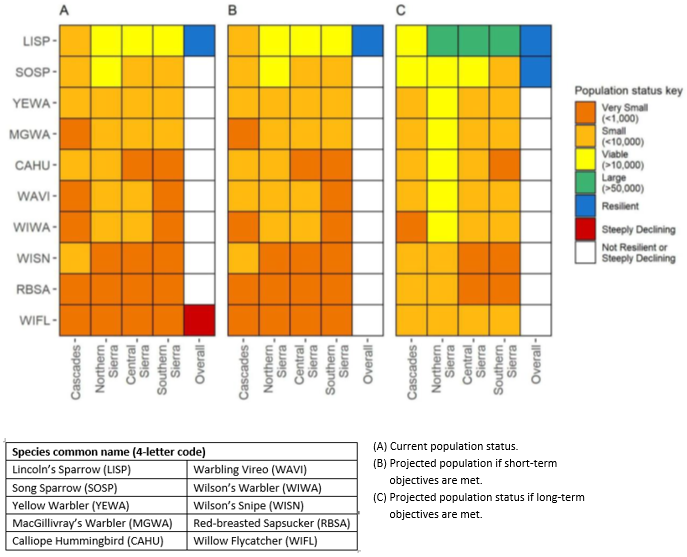Secondary Focus Area:
Mountain Meadows
Mountain meadows are ecologically distinct and are treated separately from valley and foothill grasslands. Within the CVJV planning region there is an estimated 169,252 acres (Roberts et al. 2022. Foothills to Summit. Point Blue Conservation Science, Petaluma, CA).
The CVJV set the habitat objective as no net loss of meadow habitat, assuming that mountain meadow restoration and enhancements of the existing meadows can assure robust populations of our focal bird species.
Many meadows are privately owned and at risk of conversion to a land use that could result in reductions in breeding densities and population sizes, easily eroding population gains from restoration actions. Thus, working with landowners on land protection and conservation is an important component of maintaining the current extent of meadow habitat.
Our Focal Bird Species for Meadows
A suite of 10 focal species was chosen that collectively represent a range of life histories and vegetation associations within meadows.
(Species common name (Latin name, 4-letter code))
- Lincoln’s Sparrow (Melospiza lincolnii; LISP)
- Song Sparrow (Melospiza melodia; SOSP)
- Yellow Warbler (Setophaga petechia; YEWA)
- MacGillivray’s Warbler (Geothlypis tolmiei; MGWA)
- Calliope Hummingbird (Selasphorus calliope; CAHU)
- Warbling Vireo (Vireo gilvus; WAVI)
- Wilson’s Warbler (Cardellina pusilla; WIWA)
- Wilson’s Snipe (Gallinago delicata; WISN)
- Red-breasted Sapsucker (Sphyrapicus ruber; RBSA)
- Willow Flycatcher (Empidonax traillii; WIFL)

Roberts LJ, Burnett R, et.al. 2022. Foothills to Summit. Point Blue Conservation Science
